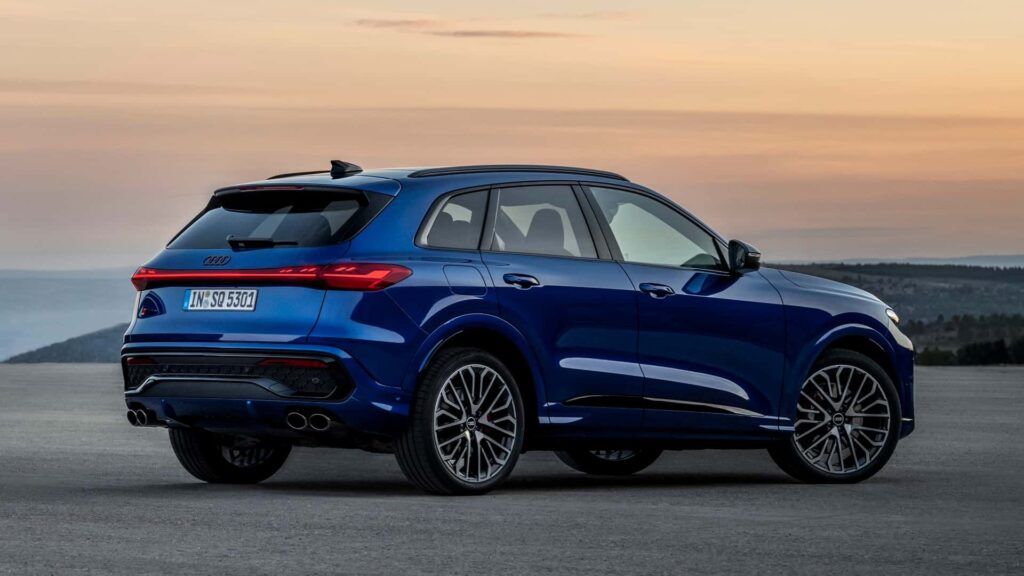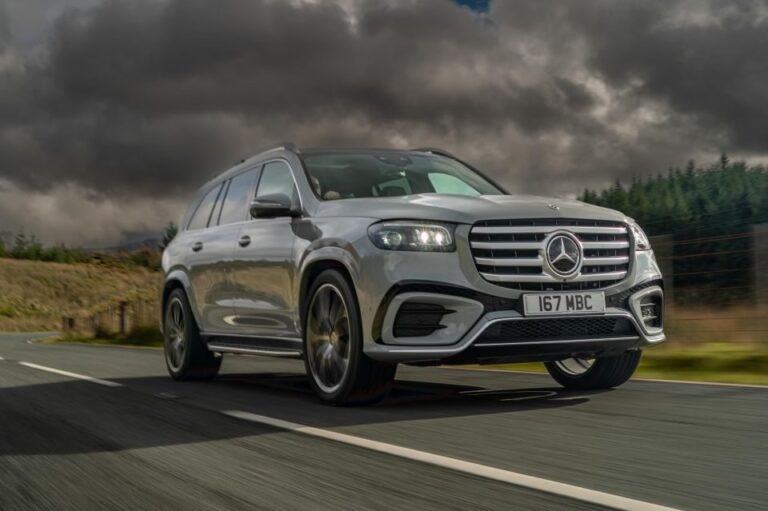The Audi Q5 has long been a dominant force in the luxury SUV market for good reason. In 2023, it became Audi’s best-selling model globally, showcasing its popularity across various regions of the world. With the introduction of the third-generation Q5, Audi promises a car that is more spacious, dynamic and modern than ever before. But does it live up to the expectations set by its predecessors? In this review, we explore everything you need to know about the new Audi Q5, from design updates to technology advancements and driving dynamics.

A Quick History of the Q5
The Audi Q5 is strategically positioned above the smaller Q3 but below the larger Q7 in Audi’s SUV hierarchy. The first-generation Q5 debuted in 2008, manufactured in Audi’s Ingolstadt factory in Germany. With the second generation, production shifted to Mexico, a trend that continues with the third generation. Approximately half of the Q5 models produced in Mexico are destined for the North American market, while the other half cater to Europe.
Globally, the Q5 stands as Audi’s bestselling model. However, in the UK, it ranks as the fifth best-selling Audi model, trailing behind the A3, A1, Q4, and Q2. Despite this, the Q5 remains a significant player in Audi’s portfolio, with the second-generation model earning praise for its drivability and interior comfort. The third-generation Q5 faces the challenge of maintaining this legacy while introducing fresh updates.
Exterior Design
Audi has taken a cautious approach with the design of the new Q5. Instead of a complete overhaul, they’ve opted for subtle but effective changes to an already successful formula. The overall shape is curvier, with a slightly higher window line and headlights that sit higher than before. Audi has also introduced upgraded lighting options, offering buyers the choice of eight different light signatures. These lights are not just for show; they can project warning signals to vehicles behind in case of potential hazards.
The rear lights, particularly on the sportier SQ5 variant, feature a unique braking system that enhances safety. For those who want to personalize their vehicle further, Audi offers 11 standard colours and the option to go for an exclusive custom paint job at a significant premium.
Wheel sizes range from 17 to 21 inches, with the UK market starting at 19 inches due to local buyer preferences, despite the country’s less-than-ideal road conditions. This emphasis on design suggests that aesthetics play a major role in the Q5’s appeal, even at the cost of some comfort.
Performance and Powertrain Options
The new Q5 is available with a range of engine options, including one petrol, one diesel, and a high-performance 3.0-liter V6 petrol for the SQ5. Audi has integrated its latest mild hybrid technology, which it calls Mild Hybrid Plus, into the 2.0-litre petrol and diesel variants. This system features a 1.7 kWh battery, allowing for short distances at low speeds on electric power alone. However, the additional weight of the hybrid system, around 70 kg, may have a noticeable impact on fuel economy, something that will be interesting to test in real-world conditions.
All models come equipped with a seven-speed automatic gearbox, and a plug-in hybrid version is expected to launch next year, boasting an impressive 62-mile electric-only range. Despite Audi’s increasing focus on electric vehicles, this Q5 remains firmly rooted in traditional combustion power, with the manufacturer confirming that no fully electric version will be offered for this model. Those seeking an all-electric experience will need to look at the Audi Q6 e-tron instead.
Handling and Drive
While the new Q5 carries over many of the great driving characteristics of its predecessor, it lacks some advanced features found in larger SUVs, such as four-wheel steering. This omission is noticeable when comparing the Q5 to rivals like the BMW X7 or Range Rover, which offer enhanced manoeuvrability in tight spaces. However, the Q5 remains an excellent all-rounder with a balance of comfort, agility, and responsiveness.
This generation is built on Audi’s new Premium Platform Combustion (PPC), the same architecture underpinning the latest A5. While the platform is new, the car’s dimensions are strikingly similar to the outgoing model. It’s slightly longer, but the wheelbase is virtually unchanged, which means the spaciousness inside remains more or less the same.
Interior and Technology
One of the most notable updates in the new Q5 is the interior, heavily inspired by the all-electric Q6 e-tron. The dashboard features a suite of digital screens, including an 11.9-inch digital driver display, a 14.5-inch central infotainment touchscreen, and a 10.9-inch passenger display. The latter even comes with a feature that prevents the driver from seeing what’s on it to minimize distractions.
While the tech-forward approach is impressive, it may present challenges. The removal of physical buttons and dials in favour of touch controls could make operating the infotainment system more distracting, particularly when driving. That being said, Audi’s infotainment systems have always been responsive, and this one is no exception. The system supports voice commands, making it easier to navigate without relying entirely on touch.
Quality is another area where the Q5 excels. The cabin materials include soft-touch suede Alcantara on the doors and ambient lighting as part of an optional package. However, some elements, like the third passenger display, will also be optional, meaning you’ll need to dig into your pockets to enjoy the full luxury experience.
Space and Practicality
Despite being built on a new platform, the dimensions of the third-generation Q5 are remarkably similar to the previous model. The vehicle is 3.5 cm longer overall, with only a 1 mm increase in wheelbase. This minimal change means that interior space, particularly in the rear seats, remains largely unchanged.
Legroom and Headroom: The Q5 offers ample legroom and decent headroom for adults. However, taller individuals (over six feet) might find the sunroof slightly restrictive compared to other SUVs.
Seating Configuration: The rear seats cannot accommodate seven passengers; for those needing seven seats, the Audi Q7 remains the available option.
Sliding Rear Seats: The rear seats feature a 60/40 split configuration, allowing individual adjustment for increased boot space when needed.
Boot Capacity: The boot offers approximately 575 litres of space, slightly less than the BMW X3 but still competitive. The new parcel shelf can be stowed under the boot floor, enhancing practicality. Additionally, the boot includes a powered tailgate and increased underfloor storage, though plug-in hybrid variants might offer slightly less space due to larger batteries.
Pricing and Release Date
Orders for the new Audi Q5 are expected to open around October or November 2024, with first deliveries anticipated in March 2025. While Audi has yet to confirm pricing, it’s expected to see a slight increase over the current model, which starts at just under £50,000 in the UK. Considering the new platform and advanced features, a price hike seems inevitable.
Verdict
The third-generation Audi Q5 is a solid evolution of an already popular model. While it may not introduce groundbreaking changes, it builds on its strengths—spaciousness, technology, and comfort—while subtly enhancing its design and performance. For buyers looking for a luxury SUV that balances premium features with practicality, the new Q5 remains an excellent choice. However, with Audi’s move towards full electrification, this generation of the Q5 could be one of the last opportunities to own a fuel-powered Audi SUV of this calibre.
















